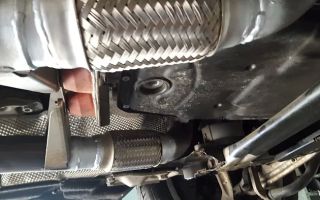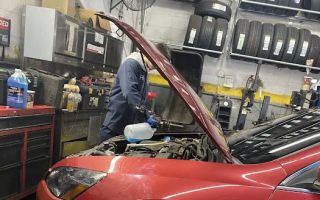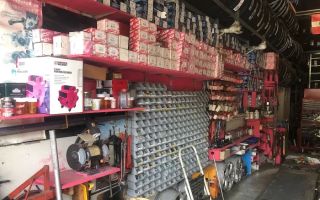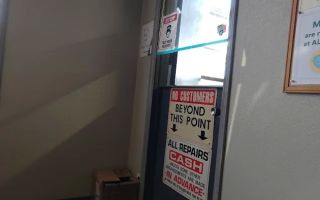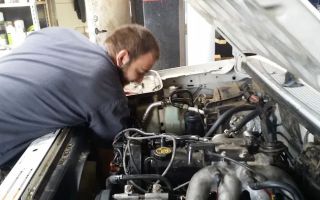How to Fix a Damaged Tire Sidewall Temporarily: A Step-by-Step Guide for Drivers in Need of Immediate Solutions
As a driver, you know that tire damage can happen at the most inconvenient times. Whether you're on a long road trip, commuting to work, or running errands, a damaged tire can throw your plans off course. While tire sidewall damage can seem like a major issue, there are ways to handle it temporarily until you can get the tire properly repaired or replaced. This guide will walk you through the steps of temporarily fixing a damaged tire sidewall and provide valuable insights on how to manage tire emergencies effectively. So, let’s dive into this practical guide that could save you from a stressful situation on the road!

MR. TIRE INC.
2078 New York Ave, Huntington Station, NY 11746, USA
1. Understanding Tire Sidewall Damage
Before you start trying to fix a damaged tire sidewall, it's crucial to understand what you're dealing with. The sidewall of a tire is the section that runs from the bead (the edge of the tire that sits on the rim) to the tread. This part of the tire is designed to flex and absorb impacts, but it is also the most vulnerable to cuts, punctures, and tears. Unlike the tread, which can often be repaired, sidewall damage is much trickier because of the stress it endures while driving.
Sidewall damage can occur from hitting a sharp object on the road, such as glass or nails, or from impacts with curbs or potholes. If the damage is minor, a temporary fix might be possible, but if the tear is large or the integrity of the sidewall is severely compromised, it’s safest to replace the tire immediately.

MR. TIRE INC.
2078 New York Ave, Huntington Station, NY 11746, USA
2. Assessing the Damage: Is It Fixable?
Not all sidewall damage can be repaired, and assessing the severity of the damage is crucial. Here are some factors to consider:
- Size of the damage: Small cuts or punctures may be fixable, but larger tears or gashes typically require a tire replacement.
- Location of the damage: If the damage is too close to the edge of the tire, it may be unsafe to repair it. Avoid attempting repairs on sidewalls that are extensively damaged or compromised near the bead.
- Tire condition: Even if the damage seems repairable, consider the overall condition of the tire. If the tire is old or has other signs of wear, a temporary fix might not last long enough to get you to a repair shop.
3. Temporary Fix: Steps to Take
If you've assessed the damage and decided that a temporary fix is your best option, here’s a step-by-step guide to help you address the situation quickly and safely:
Step 1: Pull Over to a Safe Location
The first thing you should do when you notice sidewall damage is pull over to a safe spot. Avoid attempting a repair while driving. Ensure that your vehicle is in a well-lit area, especially if you're on a busy road or highway. Set up any safety signals, such as hazard lights, warning triangles, or flares, to alert other drivers.
Step 2: Inspect the Damage
Take a close look at the sidewall damage. Is the hole or tear small enough to fix temporarily? If there is a puncture, debris from the road might still be stuck in the tire. Remove any debris carefully using pliers or tweezers. Check for sharp edges or protruding objects that could cause further damage.
Step 3: Use a Tire Sealant
One common method for temporarily fixing sidewall damage is by using a tire sealant. These products are designed to seal small punctures and cuts by injecting a thick sealant into the tire. Follow the manufacturer’s instructions carefully for proper application. Keep in mind that tire sealants are only a short-term solution and are not recommended for large or severe damage.
To use the sealant:
- Shake the canister well.
- Connect the nozzle of the sealant can to the valve stem on the damaged tire.
- Inject the sealant as directed by the instructions.
- Immediately drive the vehicle for a short distance to allow the sealant to spread and fill the puncture.
Step 4: Inflate the Tire
Once the sealant is applied, you may need to inflate the tire to the recommended pressure. Use a portable air compressor or a tire inflator if you have one available. This will help ensure that your tire is stable enough to get you to a tire repair shop.
Step 5: Drive Carefully to a Repair Shop
Remember, the sealant is only a temporary fix. Drive cautiously, and avoid high speeds. The goal is to get to a tire repair shop or service center where the tire can be fully assessed and repaired or replaced as necessary. If the damage is extensive, a full tire replacement might be necessary.
4. What to Do If You Can’t Fix the Tire Temporarily
Sometimes, the damage may be too severe to repair on your own. In these cases, your best option is to call for roadside assistance or a tow service. Many towing companies and roadside assistance services offer tire repair or replacement assistance. If you're stuck on the side of the road, a professional service can help get you back on the road safely.
For instance, take the story of Sarah, a driver from California. One night, Sarah was driving home when she hit a pothole, resulting in a large tear in her tire's sidewall. With no spare tire in her trunk, she called a roadside assistance service. Within 30 minutes, a tow truck arrived, and the driver safely towed her car to a nearby service center, where she was able to get a new tire installed. A stressful situation was resolved with the help of professional towing services.
5. When to Call for Roadside Assistance
While a temporary fix can work in some cases, it's important to know when it’s time to call for professional help. Here are some scenarios when calling for roadside assistance is your best bet:
- The sidewall damage is too large or severe to repair.
- You don’t have the tools or knowledge to perform a repair safely.
- You’re unsure about the safety of the temporary fix you applied.
- Your vehicle is stuck in a dangerous location, and you need assistance getting to safety.
Roadside assistance services can offer fast solutions to a variety of tire problems, including fixing punctures, replacing damaged tires, and towing your vehicle to a repair shop. Most towing companies offer reliable, professional assistance to ensure you’re back on the road safely and quickly.
6. Conclusion: Stay Prepared and Safe
Tire sidewall damage is never a situation you want to face, but it’s always a good idea to be prepared. Knowing how to temporarily fix a damaged tire sidewall can help you in an emergency, but it’s essential to get your tire properly inspected and repaired as soon as possible. If you're ever in doubt or unable to fix the damage, don’t hesitate to call a professional towing service or roadside assistance. They can help you navigate the situation with ease and get you back on the road safely.
At [Company Name], we offer expert towing and roadside assistance services to drivers in need. Our experienced team is available 24/7 to help with tire repairs, towing, and more. Contact us today to learn more about our services or to request immediate roadside assistance!




